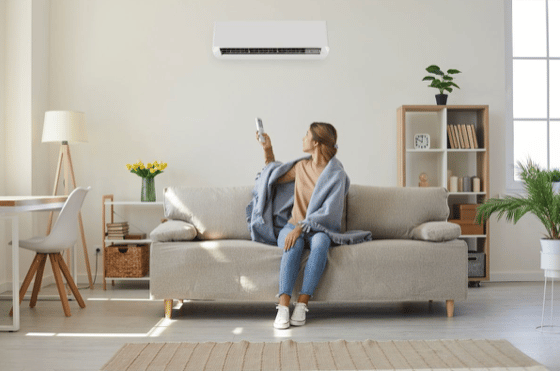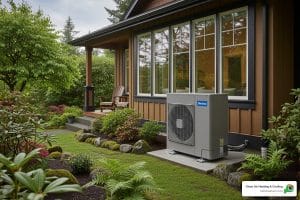Do you know that the air quality inside your home can have a significant impact on your overall health and well-being? While most people believe that the air inside their homes is cleaner or safer than the air outside, the truth is that it can easily become much more polluted. Poor indoor air quality can lead to a wide range of health problems, including asthma, allergies, headaches, and even cancer.
To help you avoid the hazards of poor air quality in your home, the team here at Clean Air Heating & Cooling has put together this list of some of the easiest and most effective ways you can improve the air quality inside your home!
1) Change Air Filters
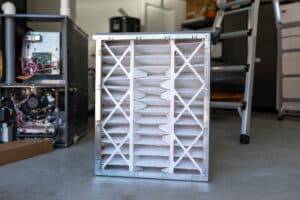
One of the simplest things you can do to improve your home’s air quality is to change your air filters. Air filters prevent dust and other pollutants from entering your home, but they only work if they are clean. Consider changing your air filters every 60-90 days to make sure they are working effectively. This will not only improve air quality but also increase the lifespan of your HVAC system.
Remember to check other filters as well! While the air filter of your HVAC system is perhaps the most important and significant when it comes to air quality, many other appliances have filters that need to be changed but are often overlooked. Vacuums, laundry dryers, and kitchen hoods are just a few examples of appliances with filters that need to be regularly changed for improved air quality!
2) Turn Up The AC
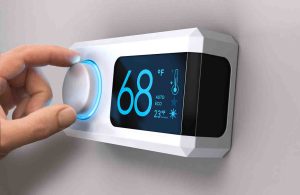
Increasing the air conditioning in your home doesn’t just make you feel cooler, it can also improve indoor air quality. When you reduce the humidity in your home, you’re creating an environment that’s less hospitable to allergens, such as dust mites and mold. Aim to keep your home between 68 and 72 degrees Fahrenheit to maintain an effective balance of comfort and health.
Aside from making the home less humid, the AC system will use the aforementioned air filter as it draws in air from outside your home. This means that the more the AC is running, the more filtered air is being circulated through your home. Again, this is why it is so important to make sure you are changing your HVAC system’s air filter and staying on top of HVAC maintenance.
3) Use A Dehumidifier
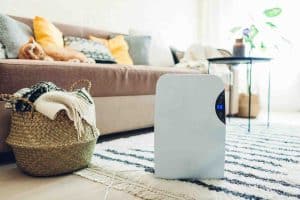
As mentioned in the previous section, high humidity levels in your home can cause mold growth, which is a significant contributor to poor indoor air quality. A dehumidifier can help reduce the moisture in the air, which can help keep mold at bay. Maintaining a humidity level between 30 and 50 percent is ideal for optimal air quality and reducing the risk of mold growth. Asthma attacks and other illnesses can be decreased by putting dehumidifiers in key areas throughout your home, such as the following:
- Basements
- Laundry Rooms
- Bathrooms
- Kitchens
- Central Locations
- Away From Walls
4) Clean Carpets & Curtains

One of the most significant contributors to indoor air pollution is dust. Carpets, drapes, and curtains can accumulate dust, dirt, and allergens over time, which can worsen indoor air quality. It is crucial to vacuum carpets regularly using a HEPA filter vacuum cleaner to trap the smallest particles and to wash curtains and drapes at least once a year or more frequently in areas with high humidity. Changing curtains and drapes as frequently as possible is a great way to minimize the amount of allergens floating around your home.
5) Have Indoor Plants

Indoor plants act as natural air purifiers when placed inside your home. Exhaling carbon dioxide lowers the quality of the air we breathe, especially in confined spaces. Plants absorb the carbon dioxide and toxins in the air and replace them with oxygen.
Generally speaking, the amount of carbon dioxide we breathe out in our homes is not significantly dangerous, but it is certainly a small contributor to lower indoor air quality. Incorporating a few plants inside your home is a simple way you can improve air quality.
6) Open A Window

Sometimes the simplest solution is also the best one! By opening a window during the seasons in which it is possible, you can increase the airflow in your home and reduce the concentration of pollutants that may have built up inside. An open window also helps reduce indoor humidity, which can have a positive impact on your home’s air quality year-round.
- IMPORTANT NOTE! With outdoor air quality around the country steadily decreasing, it is important to check air quality reports in your area before opening your windows. Make sure pollen and allergen levels are low before you open windows to reduce allergic reactions and other health risks.
7) Use Kitchen Hoods

Cooking with gas stovetops or ovens can increase indoor pollutants, such as nitrogen dioxide and carbon monoxide. Even electric burners can emit the same pollutants over time. Using a range hood or an exhaust fan can help reduce the level of pollutants in your kitchen. Make sure to clean your kitchen hood and exhaust fans regularly to ensure that they’re working efficiently. Turn on vent fans and perhaps even open a window when cooking to make sure you are not contaminating the air inside your home.
8) Clean Ducts & Vents
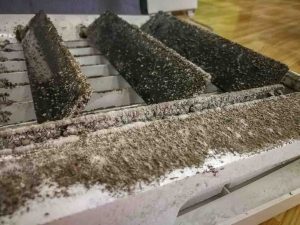
Ducts and vents that are part of your HVAC system can harbor dust, pet dander, pollen, and other pollutants. Over time, uncleaned ducts often develop mold spores that get knocked loose and circulate through the air that is breathed inside your home. Professional cleaning every few years is ideal. Clean ductwork will reduce the number of allergens and pollutants circulating in your home while improving air quality.
Professionals and experts recommend duct cleaning every 3-5 years, or more often if your system is used very frequently. General HVAC maintenance is always a good idea when it comes to improving air quality, so call a professional like Clean Air Heating & Cooling to schedule duct cleaning and maintenance services today!

